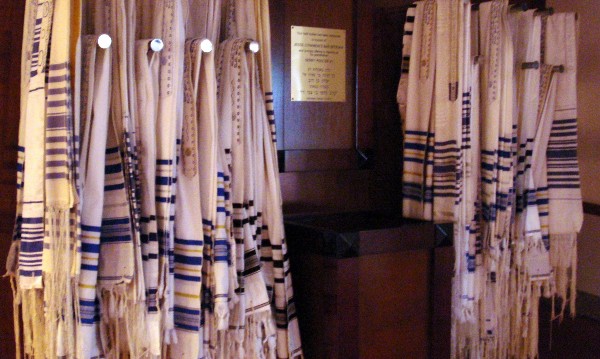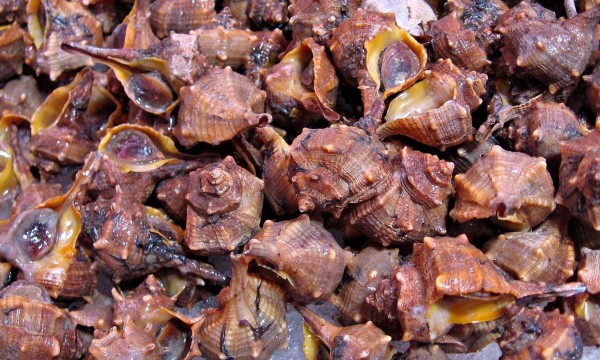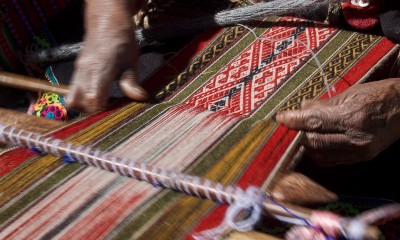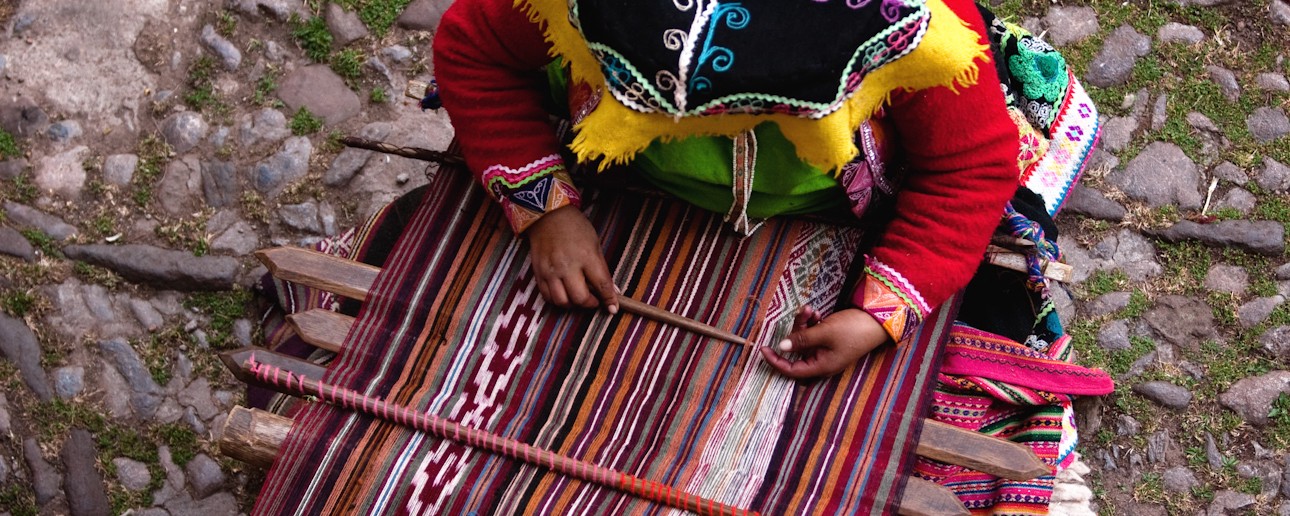

In 1733, weaving with golden thread was banned in the kingdom of Korea. King Yeongjo was a reformer concerned with improving his country’s manufacturing and economic strength, and with reducing corruption. He saw the use of golden thread, which has been found in the most prestigious Korean garments dating back 1,500 years, as wasteful.
For generations, knowledge of how to produce the thread was completely lost. Pure, melted gold cut into fibrous sticks isn’t malleable; it breaks before you can make a stitch. In 2011, researchers at the Korea National University of Cultural Heritage in South Korea pored through more than 120 ancient texts to figure out how the golden thread was made, even rebuilding a traditional loom to weave it with. During the investigation, they realized that this particular thread was a uniquely Korean thing, different from that made in neighboring China and Japan at the same time.
A traditional adhesive called agyo was mixed with red soil and used to paste golden foil onto paper made from mulberry bark, before being cut into incredibly thin strands. In China, by comparison, the process used bamboo paper; in Japan, paper from gampi shrubs.
There are hundreds of organizations and initiatives around the world dedicated to restoring dead or dying languages. But for those textiles lost to antiquity, efforts are paltry by comparison, as if traditional fabrics and their methods of production aren’t likewise carriers of a bygone culture all their own. They reveal a lot about the people who made them.
The materials they’re made of tell about a past natural environment; the dyes used about the trade networks their creators were linked into and the how-to steps for making the fabrics an indicator of thought processes and manufacturing procedures. The designs that people chose to create are both art and history, and can communicate anthropological details about past societies undiscoverable by other methods.

Take blue dye, for instance. There’s a specific kind of blue–tekhelet in Hebrew–that’s incredibly important in Judaism. Mentioned dozens of times in the Torah, it was used to color the corners of religious clothing and garments. Precisely what color it was, however, has been lost to time–though the Talmud, a central text of Rabbinic Judaism, says it comes from the blue blood of an ocean creature called the chillazon.
For 1,400 years, no one even knew what the chillazon was. When the Romans began insisting on blue as a color only for the aristocracy, and persecuted Jewish people who adhered to their faith and traditions by wearing it, garments with tekhelet ceased to be made. Recently, scraps of fabric several thousand years old and dyed blue were found in Israel, possibly yielding insight into the likely source: the murex sea snail, which secretes a yellow fluid that turns blue under the glare of the bright Mediterranean sun.
In this case, there is a nonprofit dedicated to the promotion and distribution of tekhelet. It carries the tagline: “The common thread that unites our Jewish past, present, and future.” For a culture that remains today, tekhelet isn’t just a color. It’s a part of the Jewish faith, an archeological and sartorial issue that is specific to the pride and oppression of the Jewish people.
Another notable association committed to saving obsolete fabrics is the Centro de Textiles Tradicionales del Cuscoare (CTTC). The group’s focus is the traditional weaving techniques of the civilizations that occupied the Andes before they were conquered by Europeans and had their customs suppressed.
The Inca, and their predecessors (including the Chavín, the Paracas, the Nazca, the Wari, and the Chimú), had the good fortune of living and trading along the arid western coast of South America. It’s a perfect climate for accidentally preserving textiles, making it possible to trace the development of different weaving styles through the centuries.
Nilda Callañaupa founded the CTTC in 1996 as a response to the rapid disappearance of the complex history of weaving in what is now Peru. Much like some countries can claim accents that vary from village to village, people indigenous to Peru had their own distinctive weaving styles that have been passed down through families for generation–a unique kind of cross between an oral and written history.
As Incan textiles expert and former CTTC board member Elizabeth Conrad VanBuskirk has written, the preservation of these traditional ways of making textiles isn’t just about their designs–it’s about the fundamental role they play in Peruvian history and culture:
Textile systems, developed in Peru over the millennia, represent a treasury of techniques, forms, layouts, and symbolic meanings unique in the world. In the Andes weaving contains many layers of meaning and serves ritual as well as utilitarian functions.
Peruvian textiles honor Pachamama, Mother Earth. Peruvian weavers express appreciation for the process of growth and generation, concepts of space, time, and relatedness to other species and the natural world. In the Andes, weavers pass on their knowledge, not by writing, but by the process of person-to-person communication, watching and practicing.
The CTTC’s work involves investigating different weaving styles and techniques, and teaching them to new generations across more than 10 Quechua villages in Peru. While it also works with academics elsewhere in the world to build research curricula in universities, a main objective is to give local communities a chance at economic success.
“The work of the Center is not just to preserve and to study Peruvian textiles, their symbolism and significance, etc.,” Callañaupa explained. “Our goal also is to assist families to create a larger market for their textiles and a new economy for their communities.”
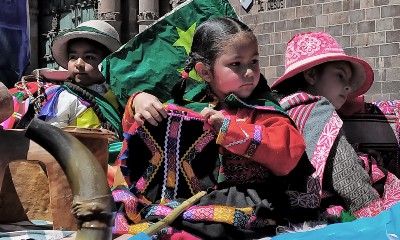
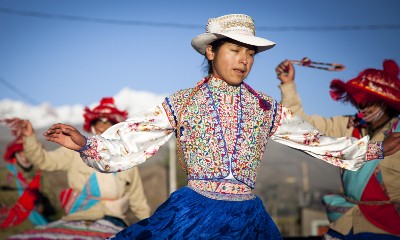

Just as ancient Peruvian weaving will persist, a contrasting example of the interplay between cultural heritage, economics, and textiles lies with the abasement of muslin. Today, muslin is a fairly unexceptional cotton cloth used for almost every kind of clothing or fabric item. In ancient eras, though, its fine texture and light weight made it something of a luxury–Egyptian pharaohs were wrapped in it, for example.
While English-speakers call it muslin because Europeans believed it originated in the Iraqi city of Mosul, its origins are now thought to have been farther east–in ancient South Asia, and in particular Dhaka, the capital of what is now Bangladesh. Dhaka’s jamdani muslin, with its distinctive patterns woven in layer by layer, was one of the Mughal Empire’s most prestigious and lucrative exports.
When the East India Company–and then the British state itself–colonized India, it was most interested in its potential as an export market for its domestic textiles industry. That meant actively repressing local weaving knowledge with force.
The Dutch merchant William Bolt, who began his career working for the East India Company, wrote a book in 1772 documenting the exploitation of the Bengal delta by the British. He said: “Weavers also, upon their inability to perform such agreements as have been forced upon them by the Company’s agents, have had their goods seized, and sold on the spot, to make good the deficiency; and the winders of raw silk have been treated also with such injustice, that instances have been known of their cutting off their thumbs.”
Combined with punitive taxes on domestically produced textiles–and incredibly low taxes on ones imported from the United Kingdom–the homeland of muslin saw its heritage of thousands of years dismantled and degraded over the course of only one generation.
Small weavers do still make jamdani muslin in Dhaka today, and it’s listed by UNESCO on the Representative List of the Intangible Cultural Heritage of Humanity. But the cultural memories that were lost will never be recoverable.


What will the fabrics we leave behind tell our descendants about who we were? There’s going to be a hell of a lot of it, after all. We live in an oil age, with clothing spun from petroleum-based fibers that last far longer than anything made of natural materials like cotton or wool.
A wool garment dumped into a landfill would be hardly recognizable a decade later. Something made of polymers, like a pair of nylon socks, could last between a few hundred to a few thousand years if buried someplace relatively cool and dark.
Archeologists 1,000 years in the future will no doubt be as bored by our clothing as we are by shards of medieval pottery–every dig site will be filled with the stuff. Maybe they’ll see the thinness and disposability of our plastic clothing as the defining trait of our era, the same way we think of white marble when we imagine ancient Greece. It doesn’t matter that ancient Greece was, in reality, a lot more colorful than the ruins we have left–those visual cues are what communicate through time to us in the here and now, profoundly influencing our popular understanding of an entire civilization.
What we leave behind, lost or not, carries with it a story unto itself.


How We Get To Next was a magazine that explored the future of science, technology, and culture from 2014 to 2019. This article is part of our Sartorial section, which looks at the impact of science and technology on how we present ourselves to each other. Click the logo to read more.

